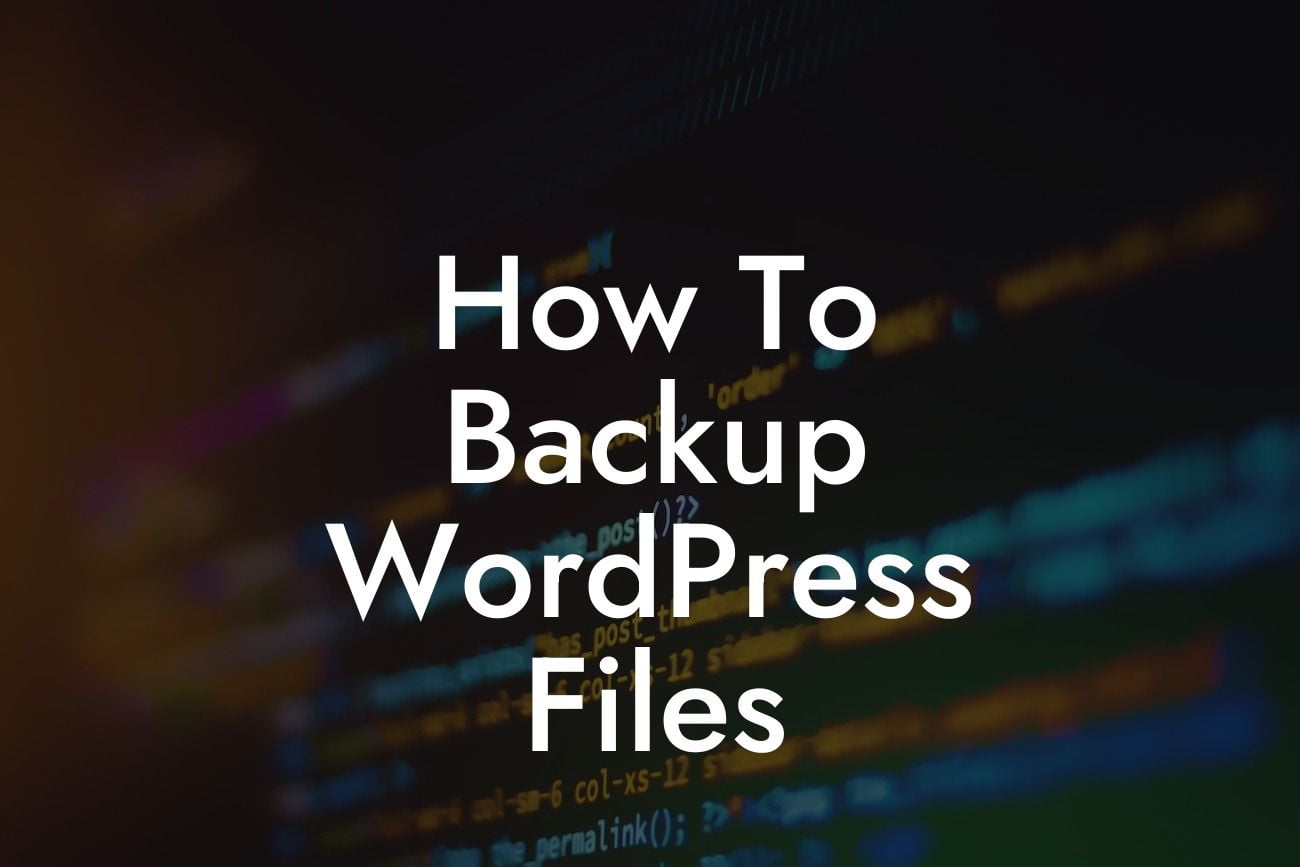WordPress has become the go-to platform for small businesses and entrepreneurs looking to establish a strong online presence. With its user-friendly interface and endless customization options, building a stunning website has never been easier. However, one crucial aspect that is often overlooked is website backup. Without a reliable backup system in place, you risk losing all your hard work in the event of a technical glitch or security breach. In this guide, we will walk you through the steps to effectively backup your WordPress files, ensuring the safety and continuity of your website.
Backing up your WordPress files is essential to safeguard your website's data and valuable content. It allows you to restore your website to its previous functioning state quickly, preventing any potential downtime or loss of crucial information. Follow these steps to create a comprehensive backup system for your WordPress website:
1. Evaluate Backup Options: There are various backup solutions available for WordPress, including plugins like UpdraftPlus, BackupBuddy, and VaultPress. Each has its own set of features and pricing plans. Consider the storage capacity, ease of use, and compatibility with your website before deciding on the right backup plugin.
2. Install and Configure the Backup Plugin: Once you have chosen a backup plugin, install and activate it on your WordPress dashboard. Configure the plugin's settings according to your preferences, specifying the frequency of backups, storage destination, and file types to include or exclude.
3. Initiate the Initial Backup: After configuring the plugin, initiate the initial backup process. This may take some time, especially if you have a large website with extensive media files and plugins. Ensure you have enough server space or consider using a cloud-based storage solution for your backups.
Looking For a Custom QuickBook Integration?
4. Automate Backup Schedule: Set up a regular backup schedule to ensure continuous protection. Most backup plugins offer automated backup options, allowing you to specify the frequency and time of backups. This eliminates the risk of forgetting to backup your files manually.
5. Verify Backup Integrity: Once the backups are created, periodically verify their integrity by restoring them to a testing environment. This will ensure that your backup files are complete and functional, ready to be restored in case of an emergency.
How To Backup Wordpress Files Example:
Let's say you run an e-commerce website using WordPress, and suddenly, your website crashes due to a plugin conflict. Without a reliable backup solution, you risk losing all your customer data, product information, and transaction details. However, with an efficient backup system in place, you can easily restore your website to its previous state, minimizing downtime and customer inconvenience.
Congratulations! You now have a comprehensive understanding of how to backup your WordPress files effectively. Do not leave your online presence to chance; explore DamnWoo's range of awesome plugins designed exclusively for small businesses and entrepreneurs. Elevate your success and protect your website from potential disasters. Share this article with fellow website owners and join our community today!













